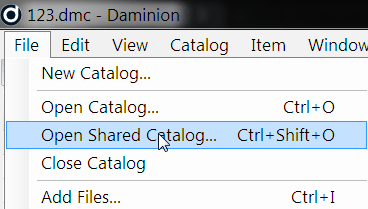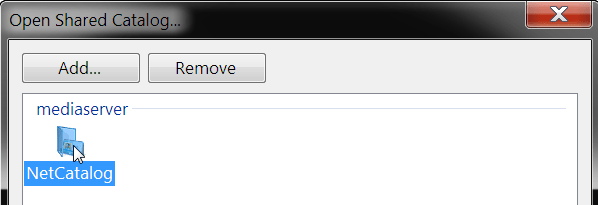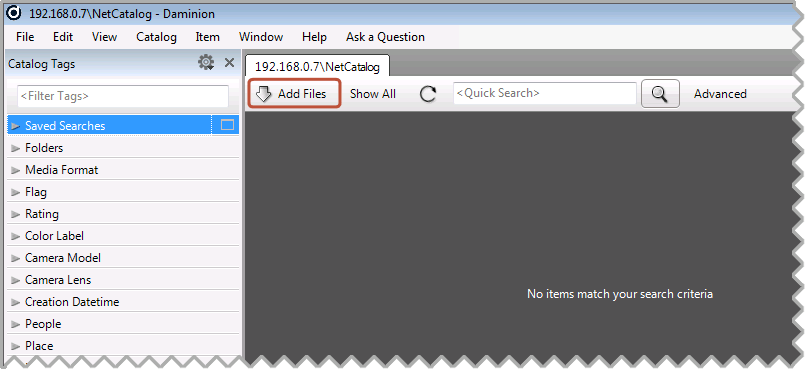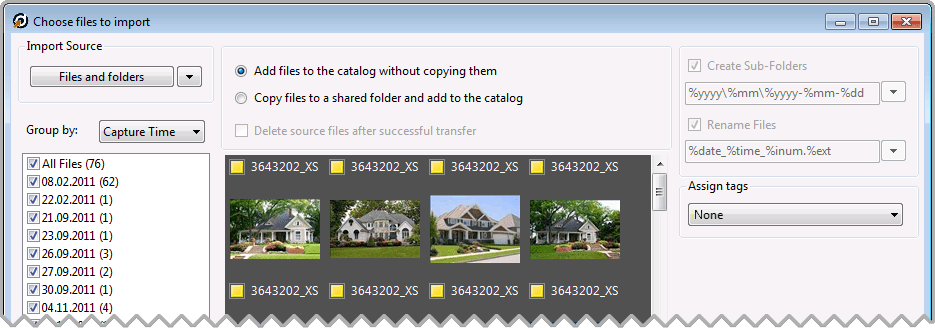
Pros:
- Performs well when importing files, viewing images, and updating metadata
- Uses User Roles to prevent unauthorized access to documents from outside Daminion
- Version Control feature
Cons:
- Large documents (like video files) that are stored in local folders on a server computer, and only accessible via Daminion, are downloaded to the local computer before viewing. To avoid this, we recommend sharing folders that contain large documents such as videos and importing them using network paths like \\ServerPC\Documents\Video via the “Add Files without copying to server“ option
Recommendations to store large documents such as Video files:
- Share folders that contain large video files and then import them using network paths, for example: “\\mediaserver\videos\…” and the “Add Files without copying to server” option. This allows you to watch videos without having to download them to a client’s computer.
- To protect your video files from accidental “screw-ups” when using Windows Explorer or any other file explorer please change permission settings for folders where video files are stored:
– 1. Assign Read-Only access to Everyone.
– 2. Assign Read/Write access Daminion Server service account user.
- To achieve the best performance, we recommend that you install Daminion Server on a computer with a minimum of 16 GB RAM, an i7, i9 (Xeon) processor, a separate hard disk with plenty of free space.
- Find all system requirements here.
SCHEME B. How to add an EXISTING media archive to Daminion Server
- Install Daminion Server on the same computer as your shared documents.
- If files are located on a NAS device you can copy your documents to a server computer that has Daminion Server installed.
- Install Daminion Client on the same server computer and launch it
- Go to the File menu and navigate to the “Open Shared Catalog…” option

- Press the “Add” button and enter your server PC name or IP address, or simply type in “localhost” (without quotes).
- You can get the server IP address from the Daminion Server Administration dashboard.

Double click on the catalog icon that appears.

If everything’s OK, you’ll see an empty workspace that will open with the name of your server or your IP address as the title in the tab at the top of the page. Click on the “Add Files” button and select the files to import into your Daminion Server.

The Daminion Import window will appear. Select the “Add Files to catalog without copying” option to import files from this computer.

- Click on the “Import” button to add the selected files to Daminion Server. This takes some time, but because the importing process runs in the background, you can start working with Daminion Client while the files are being imported.
- When the import is complete all your documents, with their descriptions, will be visible to other Daminion Clients connected to the Daminion Server.
SCHEME B. How to add NEW files to Daminion Server
- Any Daminion Client connected to your local network can add new files to the Daminion Server.
- Launch Daminion Client and click on the “Add Files” button.
- Select the files you want to import. These can be files from a local folder.
- Check the “Upload files to the server PC…” option
- In the right-hand panel, you can optionally specify a sub-folder and file naming templates for the imported files.
- Click on the “Import” button
All the chosen files from the local computer will be uploaded to the Daminion Server. In the Daminion Server Administration Panel, you can specify which server-based folder the uploaded files will be stored in.